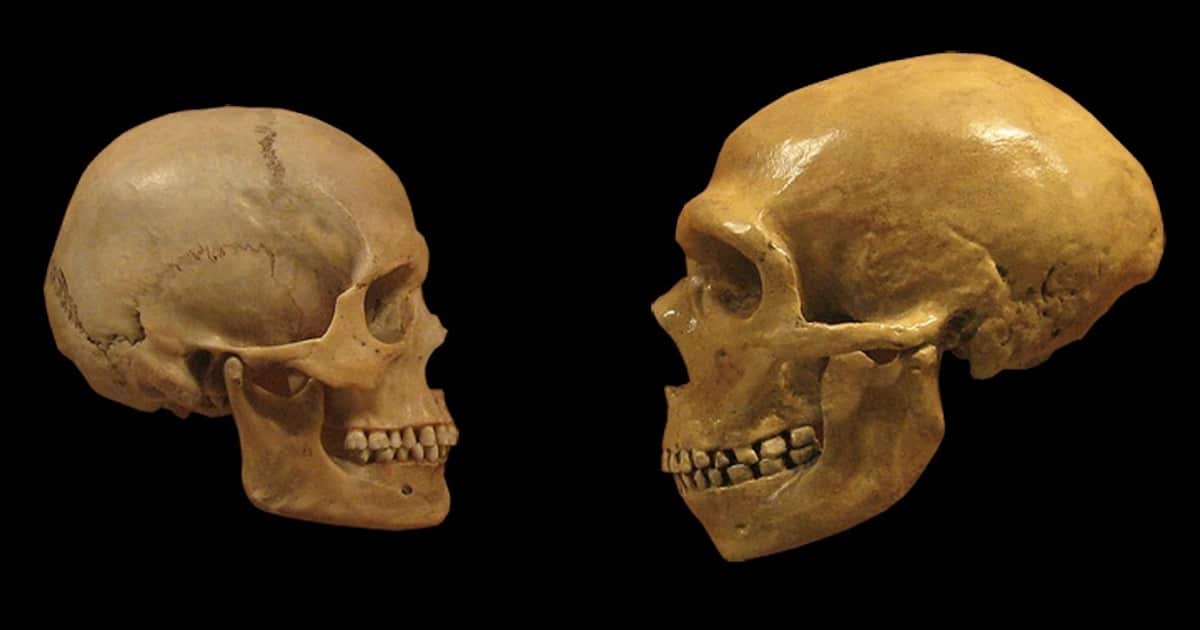 Human Origins
Human Origins
 Paleontology
Paleontology
Fossil Friday: Suppressed Dissent About Neanderthal DNA in Modern Humans

Since the seminal study by Nobel laureate Svante Pääbo almost 15 years ago (Green et al. 2010), there have been numerous publications supporting the idea that non-African modern humans have a few percent of their DNA inherited from Neanderthals through introgression. This has basically become a widely accepted fact and the textbook orthodoxy. However, there is one dissenter. It is not some crank amateur but a professor of evolutionary genetics at the University of Cambridge, William Amos, who has published over 160 peer-reviewed publications including many in the highest-ranked journals such as Nature, Science, Nature Genetics, PLOS, Current Biology, and PNAS. Amos claims that the supposed evidence for introgression has been misinterpreted and is better explained by the hypothesis “that heterozygous sites attract additional mutations at and around them, creating a link between evolutionary rate and population size.“ Testing this hypothesis led him “to the prediction that mutation rate in humans would have dropped as a result of the large loss of variability that occurred during the out of Africa event, and thence to an alternative model to inter-breeding that could explain why non-Africans are closer to Neanderthals than Africans.”
Obscure Forums
So, how did the scientific establishment react to this maverick view? Actually, in spite of his credentials and in spite of his thorough argumentation and analyses, Amos tried in vain to get his dissenting hypothesis published in a peer-reviewed academic journal. Since 2017 his manuscript is still only available as preprint from bioRxiv (Amos 2017), but at least he managed to publish two related papers in Open Science (Amos 2020, 2021). On his personal webpage Amos writes that “challenging the idea that many humans carry Neanderthal legacies has proved near-impossible!” Therefore, he decided to make a 20-page document freely available as a download on his website. It is titled “Is the idea that many humans carry some Neanderthal DNA correct?” and it summarizes his ideas, analyses, and reasons. The only brief discussions of his alternative hypothesis are found in the obscure forums of BioLogos and Peaceful Science, which is quite telling because these are sites mostly known for bashing intelligent design advocates.
A Parallel with Intelligent Design
Indeed, the case of Professor William Amos represents an interesting parallel with dissenters in the intelligent design community, who challenge the Darwinian orthodoxy and try to get their scientific studies published in peer-reviewed mainstream academic journals. In relatively rare cases it works (see here for a list), but most often the Darwinian thought police make sure that such manuscripts get rejected by the editors without even having been sent to reviewers. You heard right: such dissenting studies are mostly not rejected by peer reviewers because they are considered bad science. They are never seen by peer reviewers but are suppressed by overzealous watchmen of the scientific orthodoxy without further consideration. This is not just hearsay, because I experienced it twice in the past three months myself. So I can very much sympathize with the frustration of William Amos with the scientific community.
The latter community is clearly not driven by an unbiased quest for truth. Indeed, the peer review system has become deeply corrupted. Biologist and Nobel laureate Sydney Brenner said in an interview: “I think peer review is hindering science. In fact, I think it has become a completely corrupt system. It’s corrupt in many ways, in that scientists and academics have handed over to the editors of these journals the ability to make judgment on science and scientists.” Historian Philip Magness agreed and noted in a blog post that “Academic peer review is a highly dysfunctional process, replete with perverse incentives and maddeningly Kafkaesque outcomes.”
References
- Amos W 2017. Testing an alternative explanation for relatively greater base-sharing between Neanderthals and non-African humans. bioRxiv, 25 pp. DOI: https://doi.org/10.1101/133306
- Amos W 2020 Signals interpreted as archaic introgression appear to be driven primarily by faster evolution in Africa. Royal Society Open Science 7(7): 191900, 1–9. DOI: https://doi.org/10.1098/rsos.191900
- Amos W 2021 Correlated and geographically predictable Neanderthal and Denisovan legacies are difficult to reconcile with a simple model based on inter-breeding. Royal Society Open Science 8(6): 201229, 1–17. DOI: https://doi.org/10.1098/rsos.201229
- Green RE, Krause J, Briggs AW, … Pääbo, S. 2010. A Draft Sequence of the Neandertal Genome. Science 328(5979), 710–722. DOI: https://doi.org/10.1126/science.1188021
